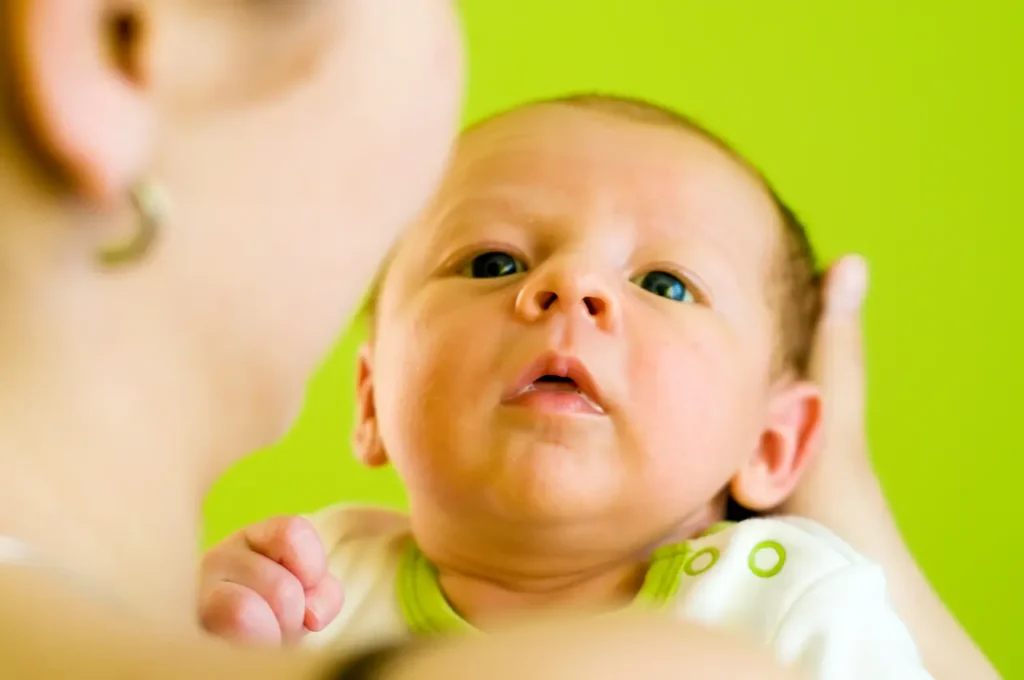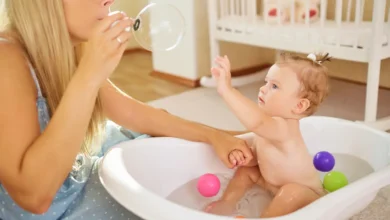Do Babies Only See in Black and White?
Do Newborns Only See in Black and White?
A common misconception is that newborns only see in shades of grey, black and white. Although babies’ vision may be limited in the first few weeks following birth, they are capable of seeing more than black and white. Even in the womb babies can distinguish between dark and light. Black-and-white toys and books are recommended to newborns because of their ability to distinguish between light and darkness.
This does not mean that infants are limited to black-and-white vision. While their colour perception may still be in its early stages at birth, newborns begin to recognise their first colours soon after they are born.

What Colours Can Babies See?
Red is the first primary colour babies can perceive, according to research. Red is the first colour that babies can see. While their colour vision may not be as sharp as that of an adult, it is still exciting to see that they can already take in the world with full colour.
Also, it’s important to remember that babies initially don’t see colours as clearly as older children or adults. Cones, the color-processing cells in their brains, are still growing and developing.
How Baby Vision Develops
Their vision is blurry when they are born. Their eyesight at birth is only 5% as good as an adult’s, meaning they can see objects that are within 8-10 inches of their faces. It is only enough for them to be able to see the face of the person who holds them. By the time they are 6 months old, their visual development has progressed rapidly. Babies begin to develop better eye-body coordination and depth perception.
It’s interesting to note that babies’ eyesight is still developing during the first few months. However, by 2 to 4 months of age, they start to distinguish between colours more clearly. During this period, their ability to distinguish between different shades of colours, such as greens and roos, is refined. This marks a major milestone in the development of their visual abilities.
Why Do Babies Prefer High-contrast Colours?
In the early weeks of life, babies prefer bold colours with high contrast, such as black and white. It’s because their cones, the cells that process colour, are still immature. They can’t yet detect subtle shades and hues. Their eyes can detect the stark contrast of black and white, so you may notice that your baby is concentrating on toys, images, or books in black and white. Patterns and prints with high contrast are great for stimulating their eyes and helping them to focus.
As their cones grow, babies will begin to respond to and see more vibrant colours. At this stage, babies are drawn to colours that are bright and bold, such as red, yellow and blue.
The Development of Baby Color Choices
As babies grow, research shows that they can develop a preference for certain colours. Some babies seem to gravitate toward specific colors while others prefer different shades. Scientists such as Anna Franklin, the head of the Baby Lab, at the University of Sussex, have studied these preferences. Franklin says that while babies dislike brown in general, they are more likely to react strongly to colours with higher saturation, such as red, green, and blue. These colours seem the most appealing to them, while pastels or softer shades do not seem to grab their attention as much.
Franklin’s research shows that babies can process more colours than previously thought. Her team discovered that babies can distinguish colours such as red, green and blue at a young age. As babies develop their brains and grow older, they will be able to distinguish more colours including pink, yellow and other hues.

When Do Babies Start to See Colour More Clearly?
Colour vision develops gradually, as mentioned. By the time babies are 2 to 4 months old, they begin to see more differences in colour. At 5 months they can distinguish colors with greater clarity, but still not as clearly as adults. As babies reach this age, they begin to notice subtle colour differences. However, their vision is still developing.
Around 6 months old, babies can see almost as well as adults. They can see the same things as we do. You’ll see your child becoming more interested in their surroundings, exploring and noticing colourful objects. They may even reach out to grab toys or books that are colourful.
Baby Vision Beyond Color – What Else Can Babies See?
Your baby’s visual system is not limited to colour. At first, infants can only focus on objects very close to them. It is because of this that their vision appears blurry from a distance. As they near the 8-week milestone, their ability improves to recognise faces and objects. They will recognise familiar faces like their parents and begin to respond to them by smiling or cooing.
This ability to perceive depth and coordinate develops with time. At first, babies might have difficulty focusing their eyes on several objects simultaneously or tracking moving objects. With time and practice their coordination will improve, and they will be able to focus on objects at different distances.
How To Support Your Baby’s Development
Provide your baby with books and toys that have bold patterns and high contrast to support their vision and help them learn colour recognition. Introduce toys in primary colors such as red, blue yellow and green to your baby. Bright colours stimulate the developing vision of your baby and will grab their attention.
You may notice that some milestones are reached earlier or later in the development of your baby. Consult your paediatrician if your child’s vision is a concern.
A World of Colors Awaits
The idea that babies can only see black and white is a myth. Although their vision is initially blurry and undeveloped, babies can perceive a wide range of colours from an early age. As their abilities to process colours mature, babies begin to perceive the world with more vibrant hues. Babies are always absorbing the world around them. From their first sight of red to the excitement of bright greens, blues and yellows. What’s the best part? It’s only the beginning!



